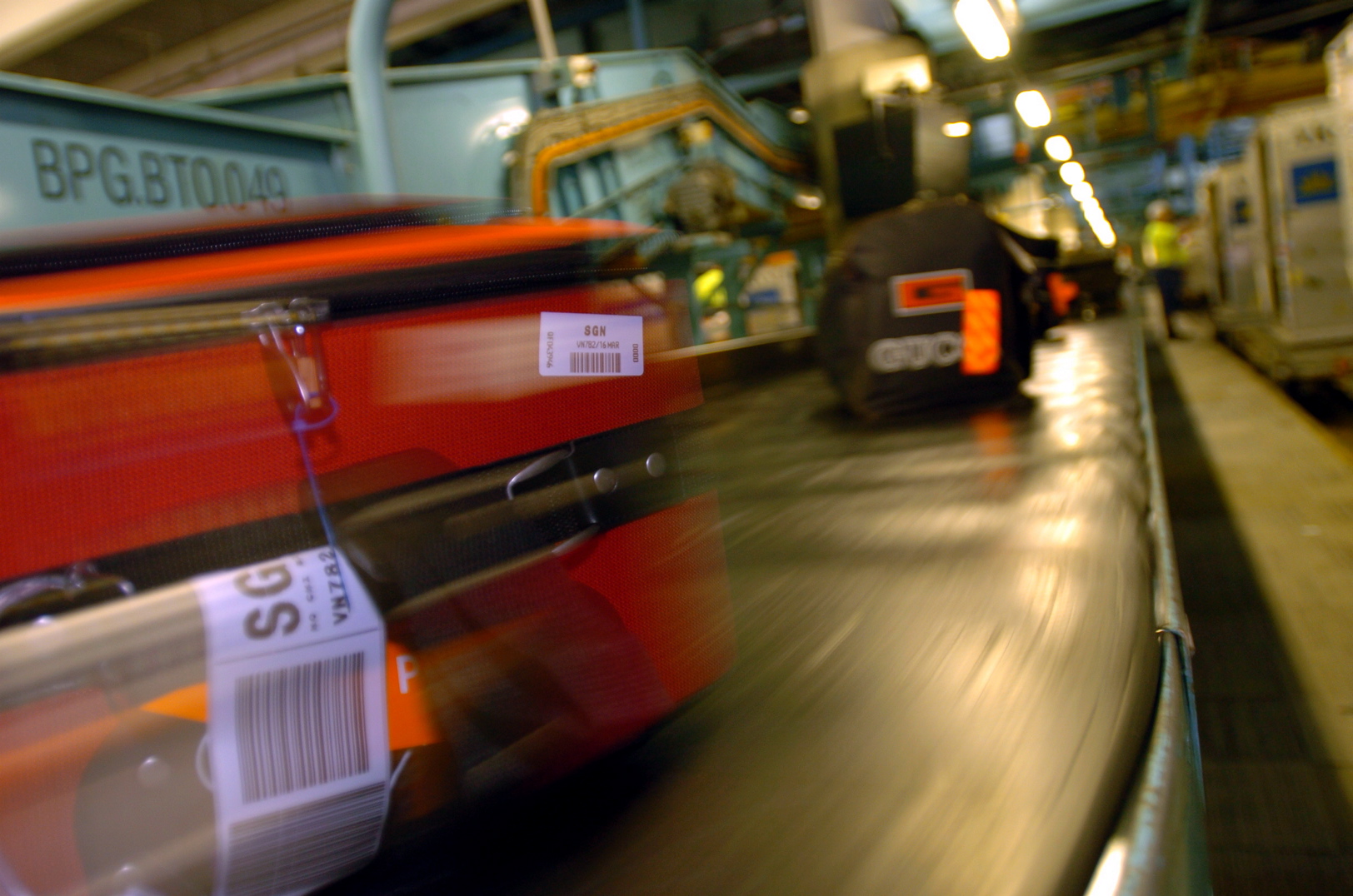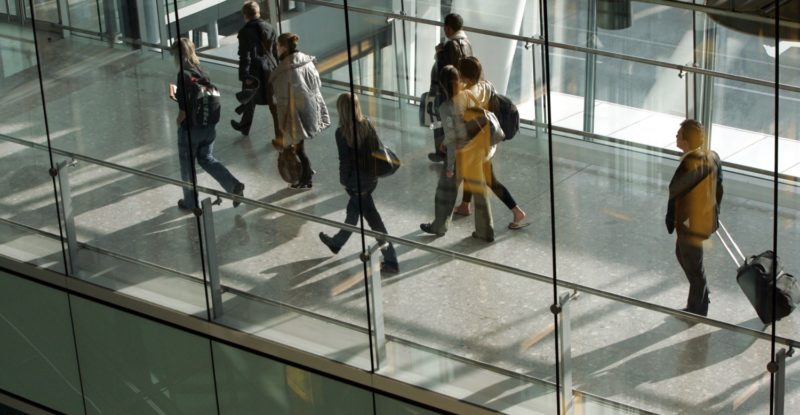Self-service will be the watchword for developments in airport #PaxEx during 2017, as operators and airlines seek to reduce the cost of doing business. Passengers can expect both the carrot of convenience as the last few airlines roll out online or mobile checkin and the stick of fewer desks available for passengers who cannot (owing to airline policies, document check requirements, or a lack of accessibility) check themselves in.
Bag drop will increasingly be automated, with airlines figuring out how to explain the process to passengers (and the industry in general starting to coalesce around a standard process). Don’t expect the electronic bag tags to take off, though: these rather overengineered solutions to a relatively simple problem are unlikely to be the death of the traditional barcoded or updated RFID tag.
At the other end of the journey, visibility of bag tracking is likely to improve regardless of whether airlines choose RFID or barcode-based tagging, as scanning systems and airline apps are linked together to provide more information to passengers. Bags may not arrive faster, but the psychological trick of telling travellers where their bag is will reduce stress at one of the most annoying points in the journey.

Barcoded tags may be replaced (or supplanted) by RFID versions), but the tag will remain for a while yet. Image: Sydney Airport
Even security is likely to become more automated, with the rollout of European-style “smart checkpoints” speeding up the process for passengers and requiring fewer security staffers to operate. With increasing global instability, however, the wild card is a new threat vector to commercial aviation that requires new ways of checking passengers in the same way as the now decade-old liquid restrictions did in 2006.
More countries and more airports will roll out automated passport checking, while an increasing number of passengers will be holding electronic passports. The tension will be between spending less on fewer immigration officials and retaining adequate capacity for screening during system outages or spikes in passengers who are ineligible for automated passport checking.
Passengers can expect to see more navigation help from airlines within terminals, with beacon technology now fairly well embedded and more airline apps taking advantage of the technology. There will, however, continue to be a tension between airlines (whose interests are for passengers to be sitting at the gate ready to board as early as possible) and airports (whose interests are for them to spend as much time spending as much money as they can).
https://www.youtube.com/watch?v=DXXvQrwAwNA
For high-value passengers like frequent flyers and business or first class passengers, the airport of 2017 will be an increasingly different experience from flying economy.
New and upgraded lounges will roll out swiftly, driven both by improved terminal restaurants (especially in the US) and by the rise of branded premium travel like United Polaris. There’ll be more separate checkin and security processing for these passengers, and more airport fast-track overall — but also more opportunities for travellers to buy up to these options as airlines (and airports) chase the $130b of annual ancillary revenue opportunity towards the end of this decade.
More, longer nonstops and reductions in meals from nominally full-service airlines like British Airways may well drive a new breed of bring-your-own options at more airports, akin to the infamous Pret à Manger sandwich/salad outlet at London Stansted. Existing airport restaurants may well go the route of the Gordon Ramsay Plane Food outlet in London Heathrow’s Terminal 5, which offers “onboard picnic” hampers.
2017 will offer more options for passengers at the airport — much like the inflight experience — but they’ll increasingly have to pay for them.
In this Series:
- PaxEx 2017: Competing economy trends make for a blurry picture
- PaxEx 2017: Premium economy options move strength to strength
- PaxEx 2017: Business will continue pushing first class boundaries
- PaxEx 2017: As first class numbers shrink, the luxury will grow
- PaxEx 2017: A year of delivery for new connectivity systems
- PaxEx 2017: Connected seatback IFE is both opportunity and threat
Related Articles:
- $130b by 2020: what does the rise in ancillaries mean for #PaxEx?
- Outcry over BA catering cut underlines importance of inflight food
- Press Release: India’s IGI airport adopts mobile passenger processing
- Connected journey a must for travelers: Samsung
- Drones, lasers seen as key aviation terrorism threats











